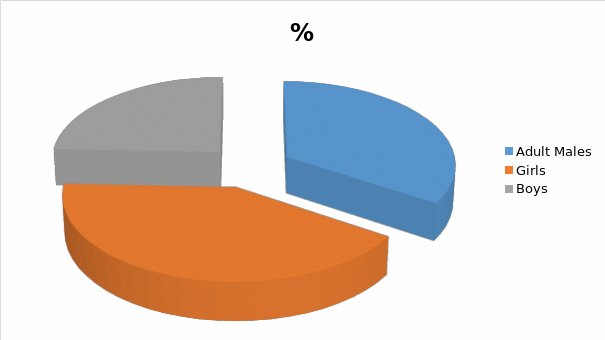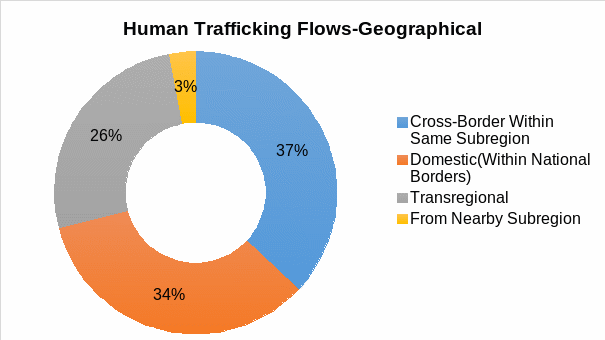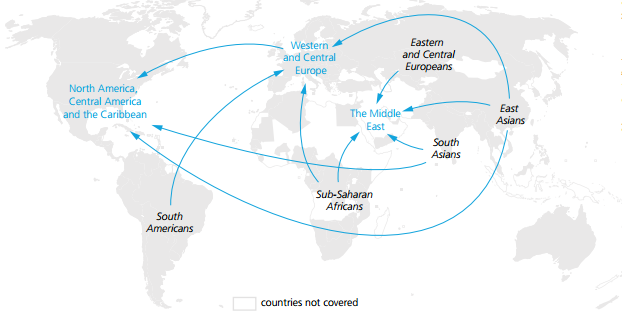Introduction
Human trafficking is defined as the illegal enrollment, shipment, keeping, or delivery of people through compulsion, trickery, application of force, or exploitation of authority. Perpetrators of this vice take advantage of the individual’s vulnerability. They also use payments to get consent from the targeted individual who is later exploited (Barner, Okech, and Camp 148). Such exploitation may include strained prostitution, servitude, removal of organs, or forced toil or service among others. Human trafficking goes hand in hand with modern-day slavery, which is also a major issue of concern (CME Resource/NetCE and Yick 2). By definition, modern slavery refers to the process of one person possessing or controlling another person. Such control significantly deprives the possessed person of his or her individual liberty to decide on his or her own (Kara 6).
Although human trafficking and slavery are illegal in all countries, their thriving has led to calls for increased efforts to curb them across the world. Human trafficking and modern slavery are issues of international distress because of the global perspectives that they take where people who are trafficked from one country are enslaved in foreign countries all over the world (Palmiotto 4). This paper discusses the two vices. The goal is to highlight important statistics and efforts that can be undertaken to reverse the trend.
Human Trafficking and Modern-day Slavery Statistics
Since the last decade, human trafficking and human slavery have become an increasing phenomenon and a major concern based on the increasing numbers of people, including children, who have fallen into the hands of the perpetrators. Human trafficking is an illegal activity, which many countries have sought to fight against. Indeed, estimates show that slaves are more in the modern times compared to the situation in the 17th-19th century when the vice was legal in many parts of the developed world such as the United States (Falls and Falls 3). In 1860, there were approximately 25 million slaves. However, in modern times, estimates indicate that the number of modern-day slaves has reached 27 million as of 2010 (Mills 52). One of the biggest challenges in addressing modern slavery and human trafficking is the fact that the vice is treated as a black market affair where facts about the perpetrators and the victims are difficult to get (Havoscope Report 16).
The 2014 Global Slavery Index revealed important statistical findings that painted a grim situation that is currently getting out of hand, as more people are being enslaved and trafficked across the world (Palmiotto 13). The index estimated that 35.8 million people were enslaved around the world in 2014. According to the index, the high number of people who are in slavery is not an indication of a rising number of the enslaved people, but more of increased accuracy in the methods of detecting slavery cases since human slavery is a highly concealed criminal activity across the world.
Since modern slavery is a globally prevalent crime, no country is devoid of elements of slavery. Among the countries that were involved in the index, Mauritania, a country is West Africa, was ranked number 1, followed by Republic of Uzbekistan , Haiti, Qatar, India, Pakistan, Democratic Republic of Congo, Sudan, and Central African Republic, which were all in the top ten in terms of the percentage of the enslaved population to the whole population (Palmiotto 21).
On the other hand, human trafficking figures also indicate the enormity of the situation where the number of people who are trafficked across the world has been increasing. According to Kara, many reasons have been established to explain why people are trafficked. For instance, according to Havoscope, strained labor, sexual exploitation, and slavery are some of the reasons (8). Human trafficking majorly affects women who form the largest share of 59% of the victims as of 2012 (Havoscope 8). In this data, while this number is high, the ratio of women to the number of all trafficked people has actually decreased. Adult males account for 14%, girls 17%, and young boys 10% as shown below.

The number of trafficked children has been increasing. 2013 statistical findings show that 27% of the victims are children as compared to 20% that was recorded in 2000 (Palmiotto 26). The trend of the increase in the number of child victims varies from one region of the world to another. In this case, the Middle East and Africa have recorded the highest percentage (68%) of the number of trafficked children as compared to all victims while Europe and Central Asia have recorded the least number (16%) of child victims (CME Resource/NetCE and Yick 3). The table below gives a breakdown of victims of human trafficking by region:
Source: (Palmiotto 18)
The human trafficking is a multi-billion dollar industry. Estimates show that the global human trafficking syndicate brings profits of approximately $32 billion (Palmiotto 18). Of this amount, close to USD16 billion is generated in developed nations while close to USD10 billion, which translates to 33% of the total proceeds, is generated in the Asian nations (Havoscope 16). Further, each trafficked laborer generates approximately $13,000 per year (Kara 32). This figure translates to roughly $1,100 per month. In the United States alone, although figures are scarce, the US is responsible for 100,000-300,000 prostituted children (Kara 33). Further, studies show that more than 244,000 of the US kids and teenagers are victims of gender-based violence and illegal human capturing.
Human trafficking is a highly transnational crime where 6 out of 10 of the victims are foreigners in the country where they are identified as fatalities (Palmiotto 56). However, despite the transnational nature of the crime, domestic trafficking has become an increasing problem. In every three reported cases of human trafficking, one case involves exploitation within the country of citizenship of the victim. The chart below shows a breakdown of trafficking flows by geographical reach:

Overall, human trafficking and modern-day slavery are two intertwined vices where the former supplies the latter with the persons who are transformed into slaves (Barner, Okech and Camp 149). Due to its high-income returns to the traffickers and the slave masters, the problem will continue in the near and far future. Hence, it will be necessary for stronger approaches to be put in place to curb the menace.
Where is Human Trafficking Happening
To many people, human trafficking is not evident to them and that they are unaware if such a thing happens. Firstly, it is important to know that the vice is widespread across the world and that the victims of trafficking originate from different parts of the world. However, trafficking is more rampant in some countries than others. For instance, Africa, the Middle East, South Asia, and the Pacific regions account for the largest number of victims of human trafficking (Palmiotto 58). The map below shows the flows of trafficking across the world:

From the above map, it is evident that human trafficking victims are majorly from the Sub-Saharan Africa, South Asian, Eastern and Central Europe, East Asia, and South America (Barner, Okech and Camp 153). One of the key trends in the flows of human trafficking is that it originates from a country that has high levels of poverty to high-income and developed countries.
According to Barner, Okech, and Camp, human trafficking is a phenomenon that is majorly fueled by poverty, lack of democratic cultures, violence against women and children, conflict and post conflict situations, lack of access to education, lack of employment opportunities, discrimination, and lack of social integration (153). However, the above vulnerability issues do not mean that high-income countries do not have their own cases of human trafficking. Although they are major destinations for trafficked humans, they account for a considerable share of human trafficking cases, mostly domestically (Barner, Okech and Camp 154). Women from poor backgrounds and conflict-prone zones are highly vulnerable due to the weak policies that have been established to protect them not only from economic hardships but also from traffickers.
Modern-day Slavery in the US and the Globe
Modern slavery is a blanket term that is used to encompass all forceful or non-consensual activities that lead to the possession of one human being by another via human trafficking, strained labor, sexual exploitation, removal of organs, and servitude (Barner, Okech and Camp 148). Despite being a developed country, which has put strong legislation against human trafficking and modern slavery, the United States is also affected by the vice. Approximately 100000-300000 children in the United States are prostitutes and slaves. Other studies show that most of the people who work as slaves in the US are in the prostitution sector (Mills 25). Some of the slaves move to the country to work as domestic house cleaners. They usually go to the US with their masters from countries that have high slavery rates such as Qatar, the UAE, and Saudi Arabia (Kara 19).
According to Palmiotto, estimates show that the United States is a major destination for internationally trafficked individuals and that it is ranked 134th in the world where approximately 60,000 of foreigners are enslaved (28). Most of the enslaved people in the US come from Latin America and Asian countries such as Mexico, Philippines, Thailand, Honduras, Guatemala, India, and El Salvador (Kara 47). The major modes of exploitation include strained work and prostitution. At the domestic level, children and young people from the United States are highly vulnerable to modern slavery, especially through forced toil and matrimonies where more than 3000 cases of strained marriages have been recorded since 2011.
Modern slavery is a global issue where 6 out of 10 of modern slaves are found in foreign countries, rather than their countries of origin. As long as the demand for slaves in one region prevails, it will be impossible to fight against the vice, regardless of the efforts that a given country puts in place. The vice is highly secretive. Hence, there is a need for more legislation and policies that will help to identify and break down the cartels that are fueling the vice across the world.
Human Trafficking and Modern Slavery in Our Neighborhoods
Human trafficking and modern slavery are also evident in our neighborhoods. For this reason, the world governments and powerful organizations have been unable to put accurate statistics on the number of people who are affected by the vice (Kara 43). Modern slavery and human trafficking occur majorly in urban centers where there is little sense of society groupings where people can address and/or the vices whenever they occur. Hence, it is difficult to identify who qualifies to be a slave in the society. Further, due to the secretive nature of the crime, which involves oppressions and threats, many victims never report or act in manner to raise an alarm, even when they have the opportunity to do so (Palmiotto 62). As such, the situation in the contemporary society allows modern slavery to thrive without the knowledge of the neighbors.
Slavery involves many activities such as strained labor, prostitution, and forced marriages among others. In the US, prostitution and strained labor are the most prevalent forms of slavery (Barner, Okech and Camp 158). Enslaved people are held against their will. They are forced to do difficult tasks such as hard labor or commercial sex among other activities where they get little or no pay. Most of them do not have valid documents. Hence, they live at the mercy of their masters. Becoming a slave is a mix of many factors that include poverty, conflict, and lack of opportunities among other aspects, which make people vulnerable. The vulnerable people become easily swayed by promises of better lives where they are trafficked within or across borders to be exposed to acts of slavery.
Preventing Human Trafficking and Modern-day Slavery
Fighting against human trafficking and modern-day trafficking requires a global approach where all countries dedicate more resources to implement legislation and policies that can effectively prevent the illegal transfer and enslavement of people both within and across borders (Kara 38). Currently, many countries where human trafficking and modern slavery are rampant have weak or no legislation to prevent the vice. This unpreparedness opens many loopholes, which are exploited by traffickers and slave masters.
Another important approach is to enact important policies and measures, which will lead to the unearthing of human trafficking and modern slavery syndicates while at the same time destroying them since they act as the main organizations that fuel the problems (Palmiotto 69). Global pressure such as economic sanctions or other measures on countries that demonstrate little action against the vice should also be considered to increase the governments’ activities towards fighting the problem. Providing resources and opportunities to the most vulnerable people is also another important approach to ensuring that people are not swayed into slavery through empty promises of better lives.
Conclusion
In conclusion, human trafficking and modern slavery are major global problems, which are increasing by the day. The situation needs proactive approaches to reversing the trend. The major factors that fuel these vices include the lucrative nature of the industry where human traffickers are able to give all possible incentives to win the hearts of their targets. As revealed in the paper, no country, including the US, is excluded in the vice. Hence, there is a need for a global approach where all countries will set aside resources to address the vices.
Works Cited
Barner, John, David Okech, and Meghan Camp. “Socio-Economic Inequality, Human Trafficking, and the Global Slave Trade.” Societies 4.2 (2014): 148-160. Print.
CME Resource/NetCE, and Flanagan Yick. Human Trafficking and Exploitation. London: CME Resource/NetCE, 2014. Print.
Falls, Abraham, and Sheri Falls. Human Trafficking: Complete Series-Global Perspective of Sex Slavery, Young Man’s Point of View of Human Trafficking in Thailand, Mother’s Point of View…Trafficking, Sex Slavery, Thailand, Asia. New York, NY: Columbia University Press, 2014. Print.
Havoscope. Human Trafficking: Prices and Statistics of the Modern-Day Slave Trade. London: Havoscope Books, 2015. Print.
Havoscope Report. Black Market Crime Human Trafficking Prices and Statistics of the Modern-Day Slave Trade. London: Havoscope Books, 2015. Print.
Kara, Siddharth. Sex Trafficking: Inside the Business of Modern Slavery. New York, NY: Columbia University Press, 2009. Print.
Mills, Bright. Human Trafficking: Modern-Day Slavery. Bloomington: Trafford Publishing, 2011. Print.
Palmiotto, Michael. Combating Human Trafficking: A Multidisciplinary Approach. Chicago: CRC Press, 2014. Print.